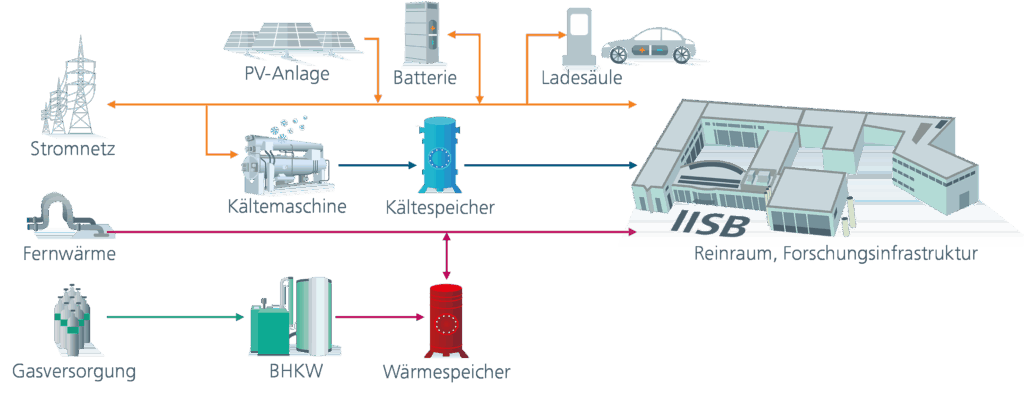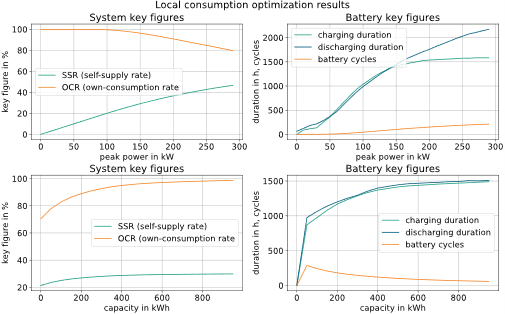The library contains models for energy components and offers a flexible approach for analyzing, simulating, and optimizing energy systems. By using generalized, abstract components with numerous parameters, a wide variety of use cases and operating strategies can be modeled efficiently. This enables the coupling of energy sectors and the optimization of energy supply.

A contribution from:
Dr. Christopher Lange
Senior Scientist, Intelligent Energy Systems / DC Grids
Fraunhofer Institute for Integrated Systems and Device Technology IISB

And:
Tobias Beck
Research Scientist, Intelligent Energy Systems / DC Grids
Fraunhofer Institute for Integrated Systems and Device Technology IISB
The model library is part of a software toolbox developed by Fraunhofer IISB for analyzing, simulating, and optimizing complex energy systems. In an age in which the efficient use of energy and the integration of renewable energies are becoming increasingly important, this library provides the necessary tools to simulate various supply scenarios and operating strategies. The use of generalized components and the ability to adapt them to the respective application through parameterization enables flexible modeling tailored to the specific needs of users. The runtime is significantly reduced compared to physically modeled systems thanks to a generalized data-based approach. A simulation is made up of various components that can be connected to each other in a modular way within a system. The components can be individually parameterized using measured values and manufacturer data. The available components include:
- Energy converters: CHP, heat pump, fuel cell …
- Energy storages: Battery, thermal storages, H2-tanks ...
- Energy sources: Solar radiation, wind ...
- External interfaces: Public grid, district heating ...
- Datasets: Load and generation profiles ...
Figure 1 illustrates the basic structure of the library: A base class provides the core functionality for all components, including methods for parameterization, general management, and help functions. Each component type has parameters as well as a simulation and an optimization class. The simulation represents the temporal behavior (via lookup tables, dynamic parameters, etc.), while the optimization class adds variables and constraints to the mathematical optimization problem. All classes also contain methods for initializing and evaluating runs.

The library also provides Excel and database interfaces for easy import and export of data to integrate load and generation profiles for a simulation or to perform further evaluations after a simulation.
An example of a practical application of the model library is the simulation of the energy supply of a clean room (see Figure 2). In such a scenario, a model is created that includes local generation units as well as storage systems, energy converters, external interfaces and consumers. By simulating different load scenarios and operational strategies, operators could gain valuable insights that help them optimize the efficiency and reliability of their system.

The system is constructed and simulated using the model library. The software toolbox provides system classes that connect the models to energy networks, thereby enabling sector coupling. The following Figure 3 shows an example of the influence of PV and battery dimensioning on the degree of self-sufficiency and own consumption of a clean room.

The implementation of operational strategies and energy management systems is another key component of the modeling process. Various strategies, such as load management, peak shaving, and self-sufficiency optimization, can be tested. Simulation of these strategies allows users to evaluate their impact on system efficiency, emissions, and cost-effectiveness. This is particularly important in a context where the integration of renewable energies and the optimization of energy consumption are key priorities.
